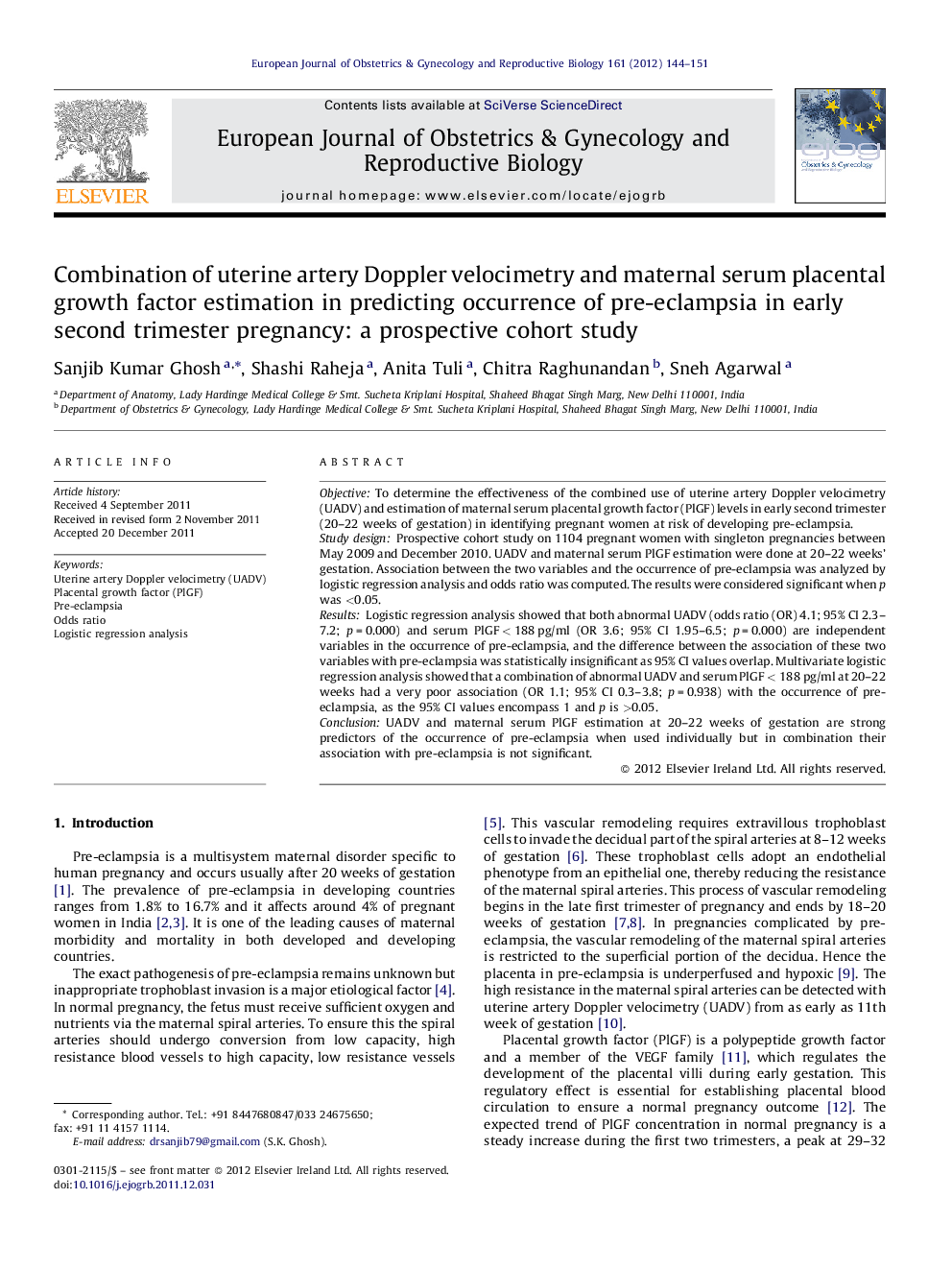| Article ID | Journal | Published Year | Pages | File Type |
|---|---|---|---|---|
| 6174405 | European Journal of Obstetrics & Gynecology and Reproductive Biology | 2012 | 8 Pages |
ObjectiveTo determine the effectiveness of the combined use of uterine artery Doppler velocimetry (UADV) and estimation of maternal serum placental growth factor (PlGF) levels in early second trimester (20-22 weeks of gestation) in identifying pregnant women at risk of developing pre-eclampsia.Study designProspective cohort study on 1104 pregnant women with singleton pregnancies between May 2009 and December 2010. UADV and maternal serum PlGF estimation were done at 20-22 weeks' gestation. Association between the two variables and the occurrence of pre-eclampsia was analyzed by logistic regression analysis and odds ratio was computed. The results were considered significant when p was <0.05.ResultsLogistic regression analysis showed that both abnormal UADV (odds ratio (OR) 4.1; 95% CI 2.3-7.2; p = 0.000) and serum PlGF < 188 pg/ml (OR 3.6; 95% CI 1.95-6.5; p = 0.000) are independent variables in the occurrence of pre-eclampsia, and the difference between the association of these two variables with pre-eclampsia was statistically insignificant as 95% CI values overlap. Multivariate logistic regression analysis showed that a combination of abnormal UADV and serum PlGF < 188 pg/ml at 20-22 weeks had a very poor association (OR 1.1; 95% CI 0.3-3.8; p = 0.938) with the occurrence of pre-eclampsia, as the 95% CI values encompass 1 and p is >0.05.ConclusionUADV and maternal serum PlGF estimation at 20-22 weeks of gestation are strong predictors of the occurrence of pre-eclampsia when used individually but in combination their association with pre-eclampsia is not significant.
